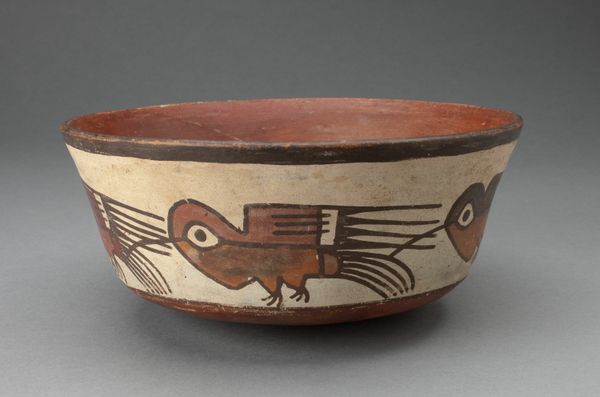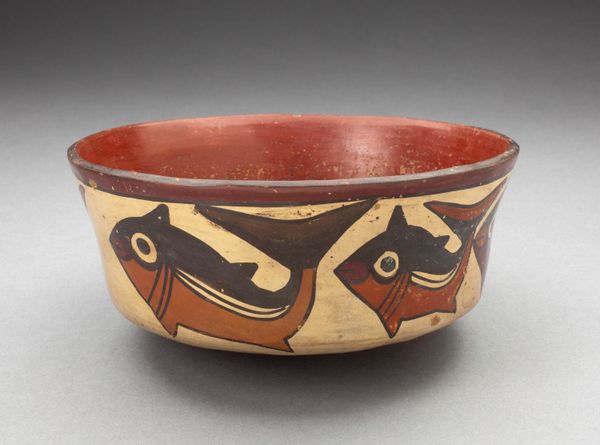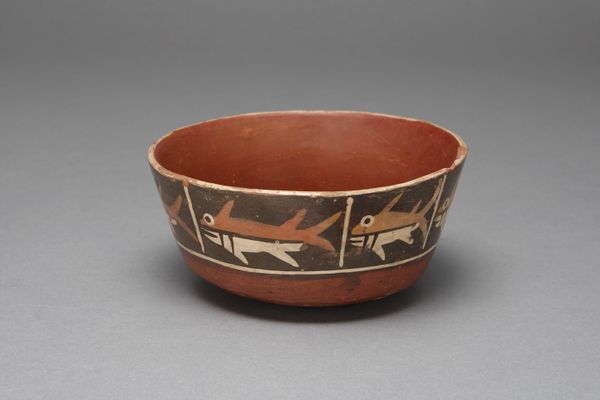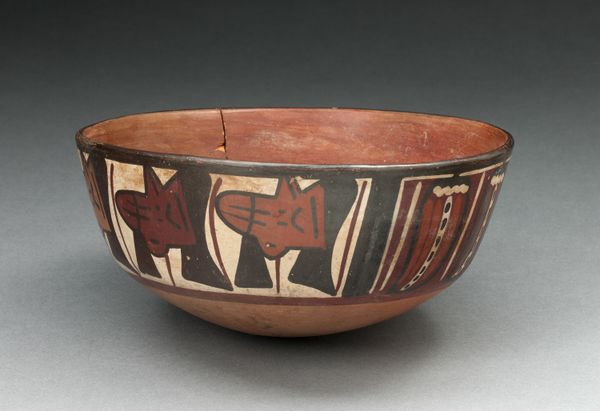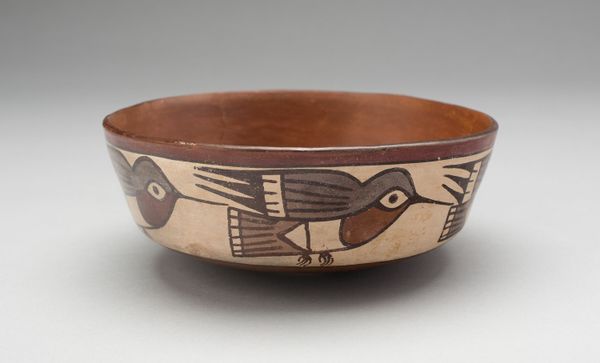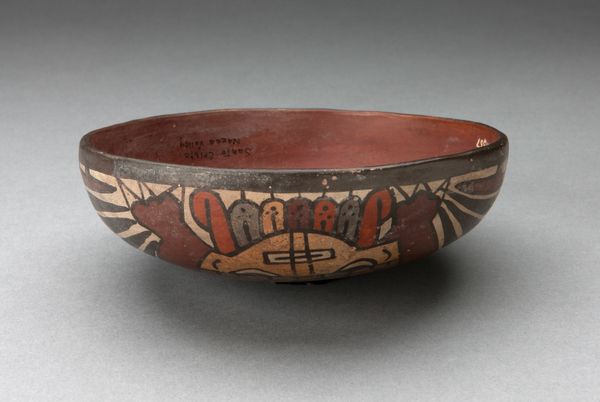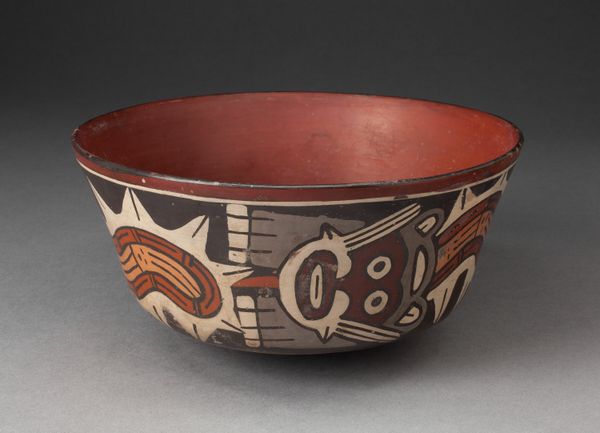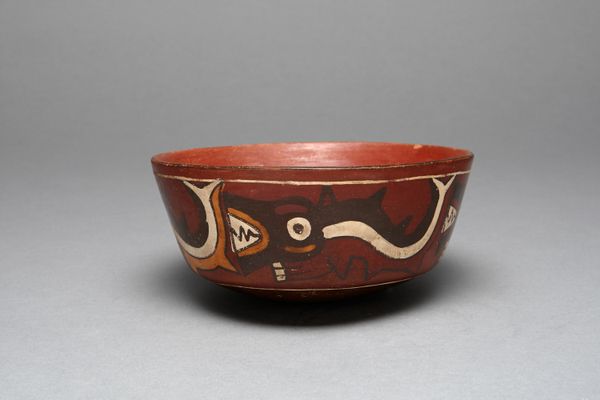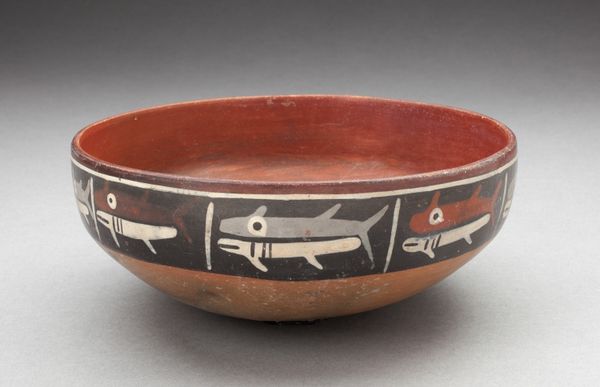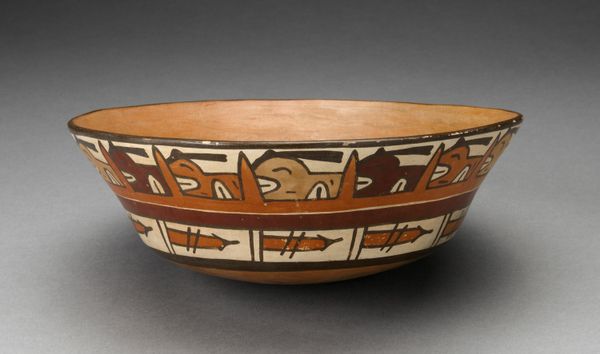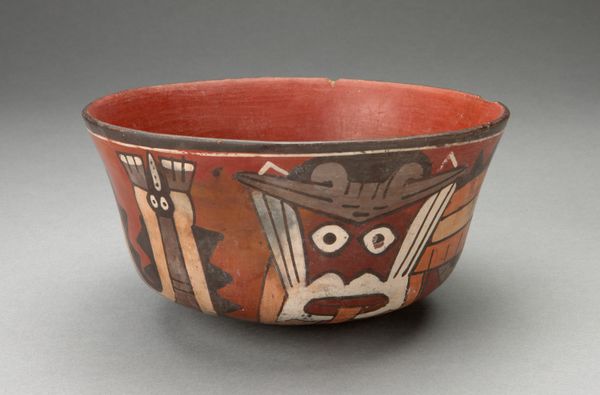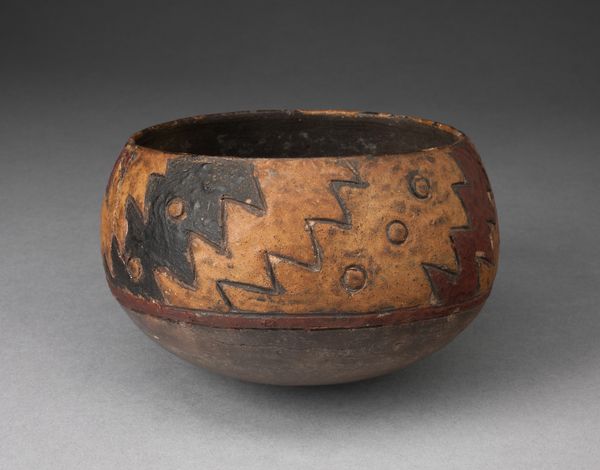
ceramic, terracotta
#
pottery
#
ceramic
#
figuration
#
ceramic
#
terracotta
#
indigenous-americas
Dimensions: 5.4 × 14 cm (2 1/8 × 5 1/2 in.)
Copyright: Public Domain
Curator: Right in front of us, we have a ceramic bowl created by the Nazca culture, sometime between 180 and 500 AD. It’s aptly named “Bowl Depicting Shark or Killer Whale.” Editor: The immediate feel is... earthy. Grounded, yet there’s this playful quality in the simple rendition of the marine life. It’s almost like a child’s drawing, in the best way possible. Curator: Exactly! The Nazca people were incredible artists. And for them, imagery was not just decoration, but a way to embed powerful narratives and symbolism in daily life. This bowl likely had ceremonial uses, potentially linked to the Nazca reverence for the ocean and its creatures. Editor: How do you think that reverence translated into social practice? Thinking about ancient South America through today’s climate catastrophe… It brings up issues of sustainability, the relationship between community and ecology… Did they already grapple with resource management? Curator: That’s a compelling line of thought. We do know that Nazca society thrived in a challenging desert environment. Marine life, like that shark or killer whale, were probably both a source of sustenance and spiritual meaning. I wonder if the vessel itself played a ritualistic role involving ocean worship for an appeal for sustenance? Editor: Perhaps these depictions ensured symbolic power? Were they asserting control, or offering respect? You know, these are not necessarily opposing viewpoints. I mean, maybe through artistry, early South Americans expressed the interconnectedness of the terrestrial and the marine. Even their dependence on each other! Curator: Ah, the beautiful ambiguity of ancient art! We see a shape repeated around the edge of this ceramic bowl, but cannot know precisely how people interpreted their forms then. Maybe that fish wasn't merely a food source or spirit, but something more. Maybe there’s something here in their connection with animals that can provide us insight today? Editor: And to return back to your point, it is pretty grounding, this piece—knowing it survived so much to communicate across cultures, across millennia. To make us consider new futures through past practices... that feels powerful, indeed.
Comments
No comments
Be the first to comment and join the conversation on the ultimate creative platform.
